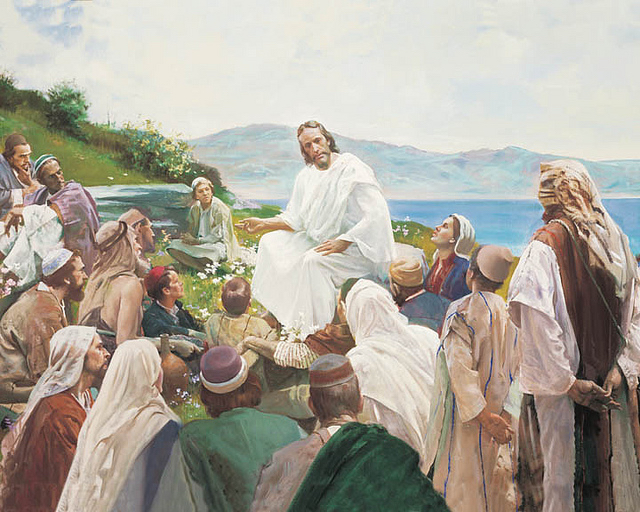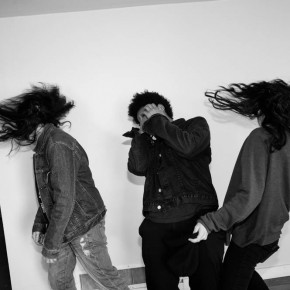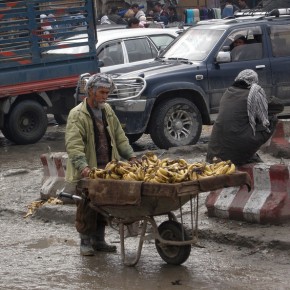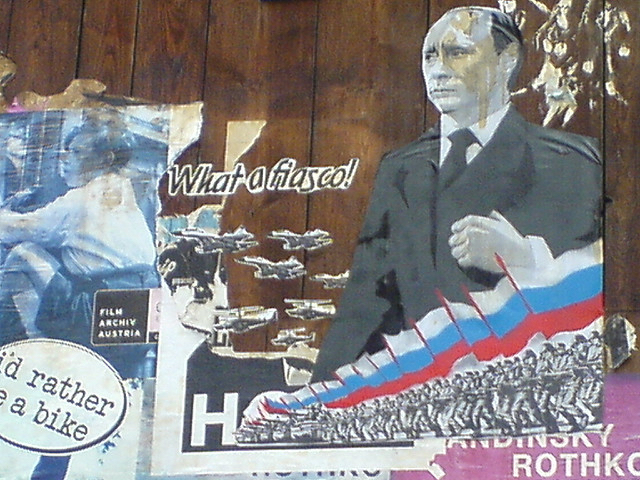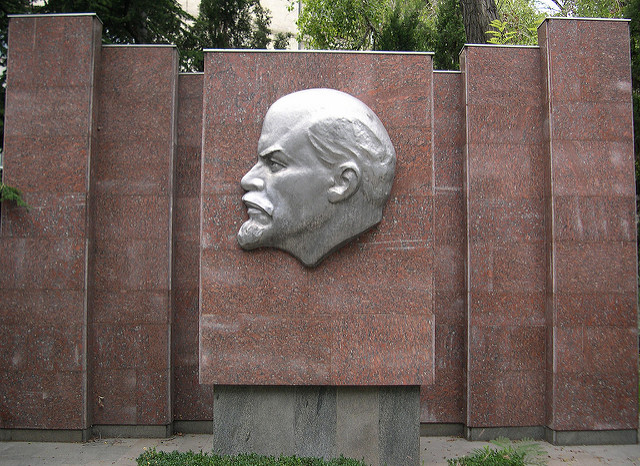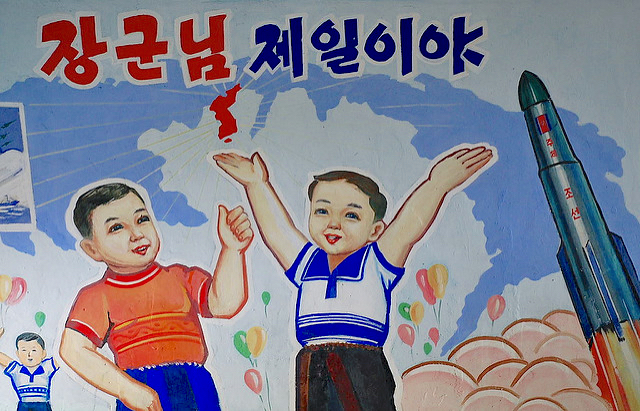“[A]gency recruiters jump at the chance to snare a Mormon,” Newsweek claimed in a 1992 story about the CIA’s post-Cold War restructuring. “Young Mormons,” the report went on, “tend to have squeaky-clean backgrounds and, thanks to their work as Third World missionaries, they often have a skill the CIA desperately needs these days: knowledge of a foreign language.”
Such considerations seem to have driven a Bush Administration program to place monitoring devices inside North Korea by way of Christian aid workers. The project was, according to an exposé by The Intercept, eventually discontinued after it failed to produce significant data.
But why would Pentagon officials even bother approaching this Christian NGO, the Colorado-based Humanitarian International Services Group (HISG), to carry out extremely sensitive and dangerous work in the U.S. Intelligence Community’s most “denied” country target? The gains were simply not worth the risks taken.
Missionary-as-spy is already a favorite charge the communist regime deploys against foreign aid workers and Christians face persecution enough in the DPRK, where even possession of a Bible carries the death penalty. The “Underground Church” is in fact so compartmentalized for fear of infiltrators that it can never act as a springboard into the inner sanctums of the ruling class.
Apparently, the only real utility here was that this group demonstrated an ability to smuggle bibles in above and beyond those of other missionary groups that regularly fly balloons over the DMZ containing airdropped propaganda.
That the US would use missionaries is unsurprising. Organized religion has always been a part of the world’s second oldest profession. In the Middle Ages, papal embassies acted as diplomatic missions. In many ways, they still do, as the Vatican has its own intelligence arm, which has as convoluted a history as can be expected, with a history of deploying assets to undermine the Axis Powers in WWII and, postwar, to participate in actions by the US Army to recruit Axis collaborators and harass political opponents. And like any modern diplomatic mission, spies were among the ambassador’s staff. Men of the cloth reported back from Cairo and Baghdad, Macao and Kyoto on political and economic matters among the heathens.

When the OSS was established in 1942 to coordinate intelligence gathering, covert action, and propaganda worldwide, it found itself heavily reliant on American Christian missionaries (and the children of those missionaries) for assistance since they were the only Americans on hand who could even speak the necessary languages. This was true of the vast majority of informants cultivated among missionaries and church hierarchies by the US Intelligence Community around the world.
The daily reality of “spying” is often more mundane than ferreting out top-secret blueprints. It is focused less on acquiring secrets than on painting a picture of the country and winning natives’ confidence. This is why the US Intelligence Community was, and is, so interested in debriefing and recruiting missionaries.
As a result, today there is still no absolute ban on recruiting clergy for intelligence work. Despite promises to consider a ban, official sentiments have always been sympathetic to the position staked out in 1975 by the Ford Administration: “The President does not feel it would be wise at present to prohibit the CIA from having any connection with the clergy …. Clergymen throughout the world are often valuable sources of intelligence and many clergymen, motivated solely by patriotism, voluntarily and willingly aid the government in providing information of intelligence value.”
As this North Korean episode shows, the National Association of Evangelicals was right to worry in 1996, when Congress again held hearings on the use of missionaries as cover that a “loophole” would be found by the US intelligence community to continue practices that were supposed to have ceased twenty years prior.
It is unsurprising that this operation would only have a few people at the top as “witting,” that is, aware of the espionage component. Meanwhile, the rank-and-file are left in the dark, “unwitting.” That practice has been part and parcel of American intelligence tradecraft since the 1940s, when the CIA and a few trusted individuals became patrons and agents of influence within labor unions, media outlets, church groups, and cultural organizations without letting most of the employees in on the secret directives and clandestine financing.
That the operation would be kept secret from most people is a given. But it also indicates the concern among the “witting” members as to how the “unwitting” might react, or revolt, to such activities. Non-governmental organizations do not necessarily jump when an intelligence service calls upon them to lend them their credentials as cover. Should missionaries “Render unto Caesar,” as a journalist and civil rights activist named Arthur J. Moore asked in 1976 after the Church Committee hearings exposed Cold War infiltration of missionary groups by the CIA?

Mr. Moore declined to stake out an absolute position in his response to that question, but he clearly came down against rendering unto the CIA. He did so on the grounds that cozy relationships with spies would do great damage to the missions’ good work, and to the missionaries’ very souls because the actions the CIA had taken as of late harmed the communities the missionaries were serving.
The son of a Methodist bishop, Mr. Moore’s position as editor of the Christian periodical New World Outlook was echoed by other Christian publications at the time of the Church Committee revelations. “At times,” as Father George Cotter of the Catholic Maryknoll Order wrote in Christian Century a few years later, “missionaries will have to be unpatriotic in order to be religious. The Church cannot play the cloak for the CIA’s dagger.” The Latin American Working Group of the National Council of Churches decried these liaisons “one of the most serious threats to missionary outreach” in their history when the initial disclosures came out in 1974.
Though not always critical of US foreign policy, church groups did become far more critical of the CIA as an institution. After the 1973 Chilean coup, Catholic and Protestant groups alike published statements against U.S. covert action in Latin America as contrary to religious and political decency – spurred on perhaps by the fact that a Belgian Jesuit, Roger Vekemans, had become emblematic of both real and imagined CIA-missionary collusion in Latin America.
One of the more prolific critics of “Liberation Theology,” Vekemans’s willingness to work with groups known to accept CIA funding (upwards of US$5 million may have gone to the priest) and his hobnobbing with top officials dogged him for the rest of his life. Vekemans’s name was often thrown around to tar missionaries as whole in the 1970s and 1980s. His record was also more realistically used to point out the complexity of churches’ work in countries with authoritarian governments and few outside funding sources aside from US aid grants.
As in Vietnam during the 1950s and 1960s, priests active in Latin America during the 1970s and 1980s were torn between their activism and need to maintain neutrality in the midst of a war zone. Go too far against the communists and you might end up shot dead in the street. Throttle back your criticism, and you could end up unable to charter relief flights – permission for which was granted by the U.S. military. But stick too close to the right-wing authorities, and your good works could be completely discredited, negating the mission’s very existence.
Those clergymen who became informants and even agents, like the anti-communist “fighting fathers” in South Vietnam did, were fewer in number than those who made compromises of varying intensity.

The Vietnam War hero and humanitarian Dr. Thomas A. Dooley, a US Navy man who became a propagandist and several things more in service to God and country, perhaps best embodied this sort of individual. Though he was not a missionary himself, he was received like one by the American public and carried himself about like one. Allegations of homosexuality and CIA connections, both of which were true, did not diminish his appeal among American Catholics as a chronicler of Christian persecution in Indochina.
The tragedy of “Dr. America” was that his “own efforts to enhance his image were outdone by others who found him terribly useful to their purposes.” He was, “ultimately, integral to a covert CIA disinformation campaign” according to a sympathetic profile. In the CIA and the Navy’s view, “Dooley was too much of a loose cannon to be trusted with substantial intelligence responsibilities, but as an eloquent anti-communist committed to peace by means of human services, he could be counted on generally to fire in the right direction.”
“Dooley was useful as a spokesman and a symbol, and, to some degree, as a spy and a courier,” his handlers seemed to have eventually decided. Likewise, the journalist Gary MacEoin, who knew Roger Vekemans, wrote in Christian Century magazine that there was really no doubting that the priest sincerely believed in his work from a theological standpoint. The problem was his methods. While missionaries could publicly respect his convictions, they could not respect his methods and retain credibility.
Moreover, by the 1980s, pro-American juntas increasingly went after Christian critics, doing so with the same or even grater ferocity that anti-clerical extremists had previously displayed on the Left. Most Christian missionary orders were appalled at this turn of events, even if they themselves did not subscribe to Liberation Theology.
Others fully rejected a more “neutral” position and took action against what they saw as immortal American policies. As Democrat Tip O’Neill, when pressed by Ronald Reagan on why he did not trust the CIA’s reporting on Nicaragua, allegedly quipped, “Well, my information is much more accurate than that. I get mine from nuns.” Indeed, these nuns’ reports from the field, citied by the Democratic House Speaker in his fight to freeze funding to the Contras, constituted such an indictment of U.S.-backed counterinsurgency that Nicaraguan rightists tortured, raped, and murdered two of those nuns, and two other missionaries, in 1980.
But as was the case with the more secularly minded NGOs whose CIA links were exposed by Ramparts magazine in the 1960s, missionary opinion was split on spying for the U.S. and collaborating with its client regimes. As Congressional hearings and media reports demonstrated of these groups, most notably the Congress for Cultural Freedom (CCF), the “secret” relationship was not that secret, it was just not discussed.
Missionaries, especially from Catholic stations in Asia, were said to be enthusiastic about volunteering impressions to CIA debriefers in the Agency’s formative years: the OSS had previously recruited from among their number to conduct wartime morale (propaganda) operations known as “Project Tower.” Even the Maryknoll Sisters, whose principled opposition in the 1980s cost them dearly, were said to dabble in the spy game up until the early 1970s, with the CIA making frequent calls at the Order’s U.S.-based offices.
As The Nation’s Penny Lernoux reported in 1980, “nobody questioned its [the US government’s] relationship with the missionaries, since church groups and the US government were agreed on the twin priorities of economic development and anti-Communism.” Christianity Today estimated that several thousand American missionaries willingly participated in CIA debriefings, largely out of sincerity and naiveté, though probably also out of some sense of flattery for being solicited by their government for advice.
“Project Tower,” for one accomplished very little militarily; far more valuable – yet unsought by the OSS – were the good impressions that Americans made outside of their clandestine work. Like Emery Carlson, a Lutheran missionary in central China who reentered Japanese territory as an OSS agent and devoted his free time to working at an aid station. Indeed, missionaries like Carlson did far more for Uncle Sam and Jesus Christ’s good names abroad through their good works than running “morale operations.”
Some individuals were more flattered by the US government’s attention than others. In the spirit of a 1967 Saturday Evening Post article by a former CIA man who handled Agency payments to labor unions titled I’m Glad the CIA Is ‘Immoral’, some Christian groups welcomed further collaboration with the government in the form of USAID grants and lobbying campaigns. In fact, during the 1980s, a number of CCF “veterans” joined with conservative Protestant groups to publicly support the Reagan Administration’s Latin America policy, tarring critics of that policy, like the National Council of Churches, as communist sympathizers.
More serious were charges laid out against operations like the Family Rosary Crusade, one of the CIA’s first attempts at “running” a Catholic network in Latin America; World Vision, long accused of being a front for spying; and the Summer Institute of Linguistics, which was affiliated with a US-based bible distribution house run like a private intelligence agency, for taking government money to pursue highly politicized campaigns in Latin America.
James Stoll, who chronicled the rise of evangelical denominations in Latin America during this period of turmoil, coined the term paraeclesiales – para-churches– to describe the American church groups and evangelical leaders who threw their lots in with the US Intelligence community and right-wing Latin American politicos, especially the Nicaraguan Contras. As Gary MacEoin had noted of efforts a decade earlier in the region, “reactionary” programs that enjoyed the backing of domestic constituents in America were given preference over “progressive” alternatives even at the expense of the mission’s work in-country.
Campaigns that groups like World Vision pursued, not coincidentally, closely supported Reagan Administration objectives as well as the religious convictions of the president’s most conservative religious cheerleaders. So too, it seems, was the Pentagon and HISG’s North Korean venture, conceived by a cadre of evangelical military officers and aid workers. In the words of John Marks, author of The CIA and the Cult of Intelligence, “Hell, I’d use anybody if it was to the furtherance of an objective. I’ve used Buddhist monks, Catholic priests, and even a Catholic bishop.”
Photographs courtesy of the More Good Foundation and Julia Manzerova. Published under a Creative Commons license.
